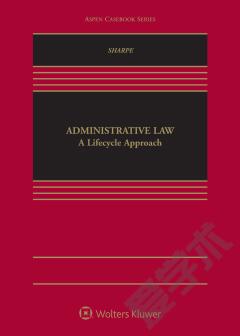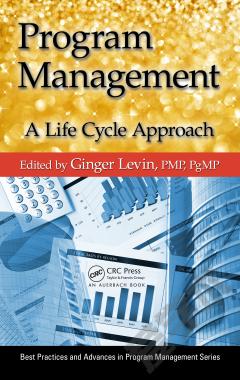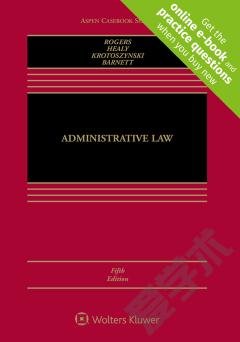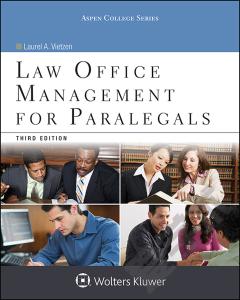Administrative Law —— A Lifecycle Approach
----- 行政法:生命周期方法
At its core, administrative law is a process-driven course. Nevertheless, traditional casebooks are organized around legal concepts and doctrines rather than the basic stages of administrative decision-making. This casebook improves on the traditional model by following the major steps in the administrative process, thereby providing students with ample grounding in the law and practice governing it. In addition to featuring seminal administrative law decisions, Administrative Law: A Lifecycle Approach incorporates a variety of agency-oriented materials—government reports, charts, diagrams, orders—that give students a fuller sense of how the administrative state’s organization and operations. These carefully edited materials model how skilled jurists and administrative lawyers go about their work, how legal problems with that work arise, and how administrative, judicial, and political processes have developed to address them. Critically, this casebook also provides numerous opportunities for guided review, synthesis, analysis, and application of salient legal concepts to facilitate student learning. Dozens of questions, as many or more than any other casebook on the market, place students in the position of lawyers tasked with navigating the administrative landscape. Professors and students will benefit from: Emphasis on the lifecycle of the administrative decision-making process to place the legal doctrines typically covered by the administrative law course in a clearer practical context. Cases and other agency-oriented materials that are tightly edited and selected for both seminality and instructive value. Examples of agency work product and descriptions of agency organization and operations that are strategically placed throughout the book. Explanatory introductions to most topics and describes basic and recurring fact patterns that lawyers encounter when dealing with the issues of administrative law and policy. Agency-oriented materials—reports, charts, diagrams, opinions—to give students a fuller, unmediated sense of administrative work product. Questions inspired by Bloom’s Taxonomy that focus instead on testing, reinforcing, and extending students’ understanding of the administrative law and concepts featured throughout the book. Numerous problems that prompt students to apply what they have learned and to produce the types of analysis expected of skilled administrative lawyers. Teaching materials include: A comprehensive Teachers’ Manual.
{{comment.content}}








 京公网安备 11010802027623号
京公网安备 11010802027623号